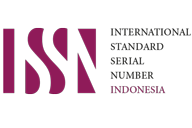Telemedicine dalam Konstruksi Hukum di Indonesia
Abstract
The Covid-19 pandemic that occurs in the world is one of the challenges that must be addressed by following technological developments. Telemedicine is currently an alternative in doctor-patient communication by taking advantage of technological developments in the Industrial Revolution 4.0. This study uses a normative legal method with an approach to telemedicine theories, regulations, and cases. The formulation of the problem raised in this study is about the benefits of telemedicine in general and the confidentiality of patient medical data and information. Telemedicine can reach all levels of society, especially with the geographical conditions in Indonesia and the uneven distribution of health workers. Telemedicine makes it easy for the public to conduct consultation and communication with health service facilities. The aspect of protecting patient medical data and information is one of the things that need to be considered in this telemedicine service because it is something that is regulated in layers through Law No. 29 of 2004 concerning Medical Practice, Law no. 36 of 2009 concerning Health, Regulation of the Indonesian Medical Council (Perkonsil) No. 74 of 2020.
Keywords: Telemedicine, Benefits, Confidentiality
References
Agus. (2019). Patologi Birokrasi Dan Kolaborasi Pendekatan New Public Service Melalui Model Citizen’s Charter. Jurnal Politeia. 2 (1): 77-78
Anwar, A. (2014). Aspek Hukum Penggunaan Telemedicine. Jurnal FIKI, 1 (1): 3.
Aziz, H. A., Abochar, H. 2015. Telemedicine, Clinical Laboratory Science. 28(4): 256.
Brothers, K. B and Rothstein, M. A. (2015). Ethical, Legal And Social Implications Of Incorporating Personalized Medicine Into Healthcare. Personalized Medicine. 12(1), 43–51.
covid19.go.id. 2021. Data Sebaran. Diakses pada tanggal 7 April 2021.
Dramanda, W. (2014). Apakah Hak atas Privasi Termasuk HAM?. Hukumonline.https://www.hukumonline.com/klinik/detail/ulasan/lt4f5f850ec2388/apakah-hak-atas-privasi-termasuk-ham.
Drath, R., & Horch, A. 2014. Industrie 4.0: Hit or hype?[industry forum]. IEEE Industrial Electronics Magazine. 8(2) : 56-58.
Faisal, L. (2016). Problematika Hukum Progresif Di Indonesia. Jurnal Pengembangan Masyarakat Islam. 9 (2): 5.
forensics.uii.ac.id. 2020. Kebocoran Data Pasien Covid-19. Diakses melalui https://forensics.uii.ac.id/kebocoran-data-pasien-covid-19/ pada 7 April 2021
Gorea, R. (2005). Legal Aspects Of Telemedicine: Telemedical Jurisprudence. JPAFMAT 2005. (5):3.
Kementerian Kesehatan Republik Indonesia. 2018. Hasil Utama Riskesdas 2018. diakses melalui https://kesmas.kemkes.go.id/assets/upload/dir_519d41d8cd98f00/files/Hasil-riskesdas-2018_1274.pdf pada 7 April 2021.
KKI. 2021. Jumlah Dokter/Dokter Gigi STR Masih Aktif, diakses melalui http://kki.go.id/ pada 7 April 2021
Mattei, T.A. 2017. Privacy, Confidentiality, and Security of Health Care Information: Lessons from the Recent WannaCry Cyberattack, World Neurosurgery. 104: 972-974.
Nasution, B. J. 2005. Hukum Kesehatan Pertanggungawaban Dokter, Jakarta: Rineka Cipta : 11
Nittari, G., dkk. (2020). Telemedicine Practice: Review of the Current Ethical and Legal Challenges, Telemedicine and E-Health. Mary Ann Liebert Inc. 26 (12) : 143
Paridah, B. (2020). Implementasi dan Dampak E-Court (Electronics Justice System) Terhadap Advokat Dalam Proses Penyelesaian Perkara di Pengadilan Negeri Selong. Jurnal Juridica. 2 (1): 44.
Raharjo, A. & Sunaryo. (2014). Penilaian Profesionalisme Advokat Dalam Penegakan Hukum Melalui Pengukuran Indikator. Jurnal Media Hukum, 21 (2): 190
Santoso, B.S., dkk. 2015. Perkembangan Dan Masa Depan Telemedika di Indonesia, CITEE.
Syahr, ZHA. (2020). Dinamika Digitalisasi Manajemen Layanan Pengadilan. Prosiding Seminar Nasional Pakar ke 3 Tahun 2020. Buku 2: Sosial Humaniora: 2.3.6
Tjandrawinata, R.R. 2016. Industri 4.0: Revolusi Industri Abad Ini dan Pengaruhnya pada Bidang Kesehatan dan Bioteknologi. Medicinus. 29 (1): 31
Trautman, L dan Ormerod, P. C. 2018. Wannacry, Ransomware, and the Emerging Threat to Corporations. SSRN Electronic Journal. TENNESSEE LAW REVIEW. (86): 518
WHO, 1998, A Health Telematic Policy in Support of WHO’s Health for All Strategy For Global Health Development, diakses melalui https://apps.who.int/iris/bitstream/handle/10665/63857/WHO_DGO_98.1.pdf?sequence=1&isAllowed=y pada 30 April 2020.
Wignjosoebroto, S. (2002). Hukum: Paradigma, Metode dan Dinamika Masalahnya. ELSAM: 8-9.
DOI: 10.30595/kosmikhukum.v21i2.10597
Copyright (c) 2021 Mahindra Awwaludin Romdlon, Lutfi Kalbu Adi, Aris Aji Kurniawan

This work is licensed under a Creative Commons Attribution 4.0 International License.
ISSN: 2655-9242













